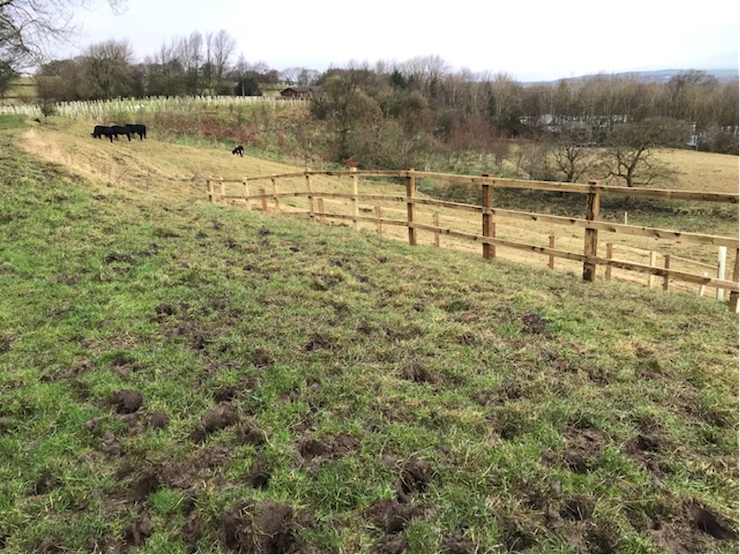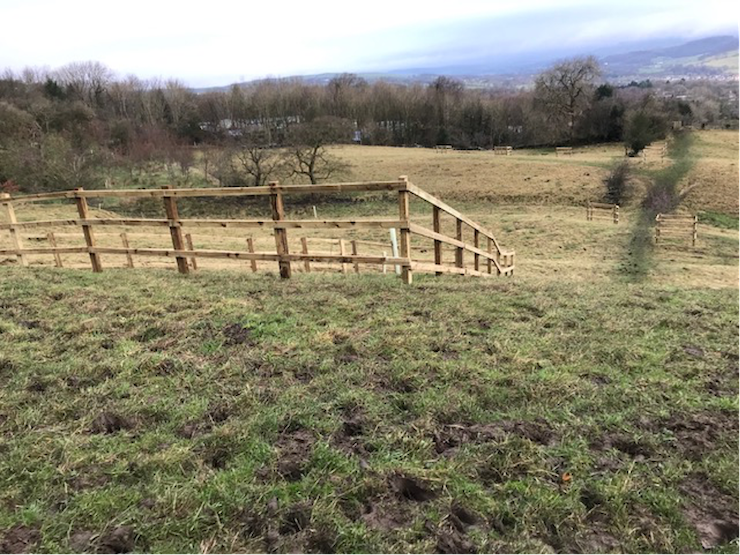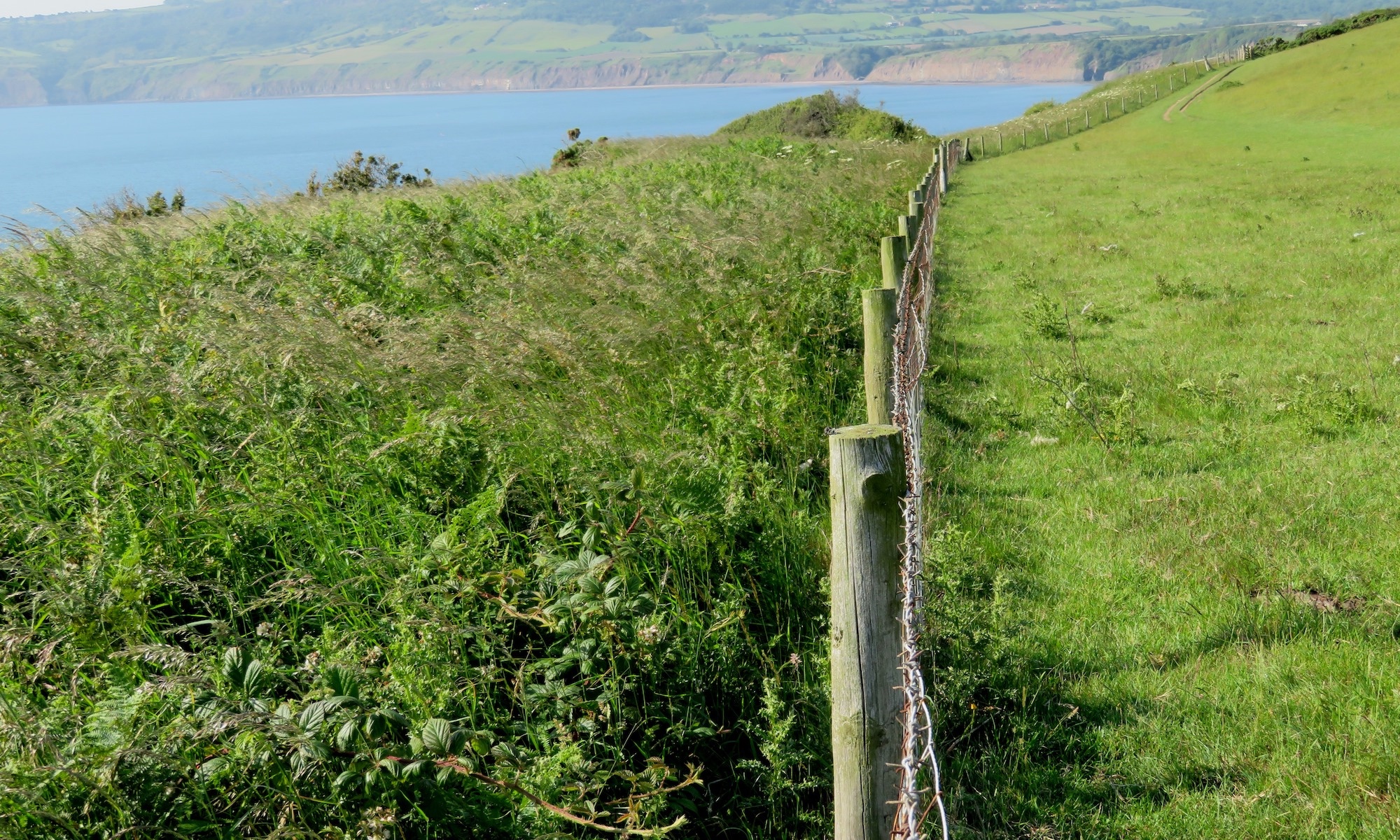10th December, 2020
Jill Feenan hasn’t had cattle on her 12-acre plot before, but as part of her rewilding journey she is, quite literally, turning over new ground. Four heifers and one bullock, borrowed from a neighbour, are now happily churning up the turf and making inroads into the coarse grasses in one of her largest fields. They also have a tendency to pull off tree guards – something Jill wasn’t expecting. “They don’t necessarily eat the young trees – they just seem to be curious and enjoy the challenge,” she says. “I’m learning a lot about the curiosity of cattle, and the importance of robust fencing!”

Although not a farmer, Jill has been interested in rewilding and regenerative agriculture for many years, and when she and her family moved to Addingham Moorside six years ago, she wanted to build on their previous experience of reintroducing mixed deciduous hedging to a 2.5 acre site in Warwickshire.
“When we bought this property, we knew the land was in need of some TLC,” explains Jill. “We wanted to restore the existing hedges and create some new woodland over time. As a family, we see this as creating a legacy for future biodiversity, and something we’re fortunate to be able to do.”
They started by planting 300 metres of native hedging along a newly fenced boundary and a small belt of 600 trees on sloping ground, which are all doing well now – although there was another lesson to learn when Jill took off the guards at the beginning of this year, only to find that within a month many had been bark rubbed by deer. She solved this by wrapping rabbit guards around damaged areas, but her aim is to ultimately remove all the guards once the trees are robust enough to withstand some rubbing and natural browsing.
It’s been a similar story with several stand-alone beeches planted last season. “The cattle pretty much trampled the single trees, but I’ve now planted new ones with strong 1m by 1m wooden fencing round.” Jill’s aim is to have standard trees dotted around the field, to complement larger enclosures with Birch, Small leaved lime and Hornbeam, and scrubby areas with Hazel, Hawthorn and Gorse. Again, once the trees are sufficiently mature the fencing will be removed.
Jill is particularly pleased with the progress of a new native hedgerow next to a beck, which she puts down to two main things: the quality of the fencing and the planting process. The hedgerow is bordered on both sides by post and wire fencing, which she deliberately set wide apart at 1.5m. This allowed the trees to be planted three-deep, which should ultimately form a dense stock barrier preventing cattle trampling the beck sides. The second factor was careful planting. Volunteers from the nearby village of Addingham, which has an active environment group, spent two weekends in January and February 2020 planting a total of 1200 mixed native trees and 100m of hedgerow across the site.

“The dedication of the volunteers, making sure each tree was planted with care, and even being prepared to scramble up very muddy slopes to make sure they all went in securely, has made a real difference,” says Jill.
As well as the hands-on help of volunteers, Jill has had grant aid and advice from the Yorkshire Dales Millennium Trust and the Yorkshire Dales Rivers Trust, as well as practical advice about grazing from Neil Heseltine in Malham. The Small Woods Association were also invaluable advisers on managing the small area of established woodland, which she shares with a neighbour, and encouraging natural regeneration there.

Not needing an income from the land means that Jill can be fairly flexible and experimental. As well as the large herbivore grazing regime that she is trying out, and a wildflower meadow that she is developing, Jill is keen to create a pond in a natural hollow fed by a spring in the centre of the main field. She is planning to dig out two levels, putting in a dammed pond on the higher level, with scope for developing a wetland area below it. With an eye on the new inhabitants of the field, she will be getting the digging and the fencing done on the same day, to avoid a cattle mud bath.
Jill’s top tips:
- Get help! There’s an enormous amount of expertise and knowledge out there. Invite people to take a look and offer their views.
- Talk to your neighbours – they might disagree or think you’re bonkers, but they also might be able to help. The key is keeping local people informed about what you’re doing and why – they often know the land much better than you and can remember what things were like in the past.
- Many things can be done much more cheaply than you think, e.g. if you do need to protect trees in the early stages, there is ample opportunity for obtaining free second-hand tree guards. New ones cost more than the trees!

